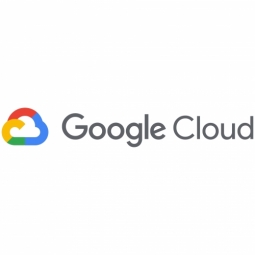Technology Category
- Cybersecurity & Privacy - Cloud Security
- Sensors - Camera / Video Systems
Applicable Industries
- National Security & Defense
- Retail
Applicable Functions
- Maintenance
- Quality Assurance
Use Cases
- Retail Store Automation
- Tamper Detection
Services
- Cloud Planning, Design & Implementation Services
- Training
About The Customer
Arcules is a Google Cloud partner and a fast-growing Canon company that was spun out from Milestone Systems. The company was launched to pursue new opportunities based on Milestone’s 20 years in on-premises video monitoring and video management software solutions. Arcules transforms video into powerful business intelligence by aggregating video and IoT data using AI and cloud technologies. The company’s solutions help enterprises optimize their business operations and make the world a safer place. The Arcules platform enables more robust insights for retail foot path, sentiment, and dwell-time analyses, using video cameras and IoT devices to correlate data on shopper behaviors in store.
The Challenge
Arcules, a Google Cloud partner and a fast-growing Canon company, was launched to pursue new opportunities based on Milestone’s 20 years in on-premises video monitoring and video management software solutions. The company aimed to provide a unified solution that analyzes data from video cameras and IoT devices for actionable insights to improve security measures and boost operational efficiencies. However, Arcules faced a significant challenge in terms of latency due to the high bandwidth of video data. During the testing and development of its solution, the Arcules IT team expected to see up to 8 seconds of latency. Storage was also a major concern for the company, as the platform was expected to handle a large volume of video and IoT data. Additionally, the company wanted to eliminate mundane infrastructure management tasks such as security patches and upgrades to focus on higher-value, customer-centric solutions.
The Solution
Arcules leveraged Google Cloud to overcome these challenges. Google Kubernetes Engine on Google Cloud demonstrated just 1.2 seconds of egress latency for live video right out of the gate, significantly reducing the expected latency. The wide range of Google Cloud storage options and guaranteed IOPS helped Arcules find the best option for storing and analyzing the data. The managed services provided by Google Cloud allowed Arcules to focus on innovative ways to add value for its customers. With the company’s Google Cloud infrastructure in place, it became easier for Arcules to remotely handle firmware updates for devices on its customers’ premises, quickly and with minimal expense. Arcules also recognized the security advantages offered by Google Cloud for bolstering the end-to-end security capabilities of its own service offering. NCC Group, a Google Cloud Security Services Partner, set up the Google Cloud policies and permissions, in addition to conducting threat penetration testing to help Arcules strengthen its systems.
Operational Impact
Quantitative Benefit

Case Study missing?
Start adding your own!
Register with your work email and create a new case study profile for your business.
Related Case Studies.

Case Study
Improving Production Line Efficiency with Ethernet Micro RTU Controller
Moxa was asked to provide a connectivity solution for one of the world's leading cosmetics companies. This multinational corporation, with retail presence in 130 countries, 23 global braches, and over 66,000 employees, sought to improve the efficiency of their production process by migrating from manual monitoring to an automatic productivity monitoring system. The production line was being monitored by ABB Real-TPI, a factory information system that offers data collection and analysis to improve plant efficiency. Due to software limitations, the customer needed an OPC server and a corresponding I/O solution to collect data from additional sensor devices for the Real-TPI system. The goal is to enable the factory information system to more thoroughly collect data from every corner of the production line. This will improve its ability to measure Overall Equipment Effectiveness (OEE) and translate into increased production efficiencies. System Requirements • Instant status updates while still consuming minimal bandwidth to relieve strain on limited factory networks • Interoperable with ABB Real-TPI • Small form factor appropriate for deployment where space is scarce • Remote software management and configuration to simplify operations

Case Study
Digital Retail Security Solutions
Sennco wanted to help its retail customers increase sales and profits by developing an innovative alarm system as opposed to conventional connected alarms that are permanently tethered to display products. These traditional security systems were cumbersome and intrusive to the customer shopping experience. Additionally, they provided no useful data or analytics.

Case Study
How Sirqul’s IoT Platform is Crafting Carrefour’s New In-Store Experiences
Carrefour Taiwan’s goal is to be completely digital by end of 2018. Out-dated manual methods for analysis and assumptions limited Carrefour’s ability to change the customer experience and were void of real-time decision-making capabilities. Rather than relying solely on sales data, assumptions, and disparate systems, Carrefour Taiwan’s CEO led an initiative to find a connected IoT solution that could give the team the ability to make real-time changes and more informed decisions. Prior to implementing, Carrefour struggled to address their conversion rates and did not have the proper insights into the customer decision-making process nor how to make an immediate impact without losing customer confidence.

Case Study
Ensures Cold Milk in Your Supermarket
As of 2014, AK-Centralen has over 1,500 Danish supermarkets equipped, and utilizes 16 operators, and is open 24 hours a day, 365 days a year. AK-Centralen needed the ability to monitor the cooling alarms from around the country, 24 hours a day, 365 days a year. Each and every time the door to a milk cooler or a freezer does not close properly, an alarm goes off on a computer screen in a control building in southwestern Odense. This type of alarm will go off approximately 140,000 times per year, equating to roughly 400 alarms in a 24-hour period. Should an alarm go off, then there is only a limited amount of time to act before dairy products or frozen pizza must be disposed of, and this type of waste can quickly start to cost a supermarket a great deal of money.

Case Study
Supermarket Energy Savings
The client had previously deployed a one-meter-per-store monitoring program. Given the manner in which energy consumption changes with external temperature, hour of the day, day of week and month of year, a single meter solution lacked the ability to detect the difference between a true problem and a changing store environment. Most importantly, a single meter solution could never identify root cause of energy consumption changes. This approach never reduced the number of truck-rolls or man-hours required to find and resolve issues.








